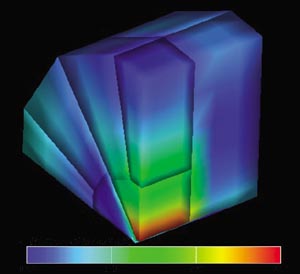

A new development in Japan that enables powerful magnetic fields to be obtained without using expensive electromagnets could open the door to smaller, special-purpose particle accelerator installations.
While particle accelerators were invented to supply the high-energy beams needed to pierce through nuclear barriers and see the subnuclear world, most of the accelerators now in use are low-energy machines used for a variety of applications, such as radioisotope production, cancer therapy and ion implantation.
In high-energy machines that take beams into the relativistic regime, the magnetic fields have to vary and pulsed electromagnets are the norm.
However, for lower-energy machines and for special-purpose magnets, it can be more economical to use permanent magnets instead, with no requirement for attendant power supplies, cooling or special cryogenics.
This idea was pioneered by Klaus Halbach at Berkeley, who in the late 1970s introduced permanent magnets as “wigglers” and “undulators” to generate synchrotron radiation from a captive high-energy electron beam. The magnetic material of choice was initially a rare-earth/cobalt alloy. Permanent magnets are also used in Fermilab’s Antiproton Recycler ring (CERN Courier July p16).
Motivated by the need to design compact machines to provide beams for cancer therapy, a team from Japan’s National Institute of Radiological Sciences, led by Masayuki Kumada, collaborated with Sumitomo Special Metals to produce a scaled-down, prototype permanent magnet to achieve the required magnetic fields of greater than 4 tesla. So far such fields have only been achievable with large superconducting magnets.
Using suitable magnetic materials such as samarium cobalt, the maximum field that can be attained is about 2 tesla normally. The Halbach-type designs improved on this by using a geometry that effectively amplifies the interior field.
The key innovation in the new idea is to use a saturated iron pole in the magnetic circuit of the permanent magnet to introduce a higher residual field, to compress the magnetic flux, and to weaken the demagnetizing field. Fields of up to 4.45 tesla have been attained when cooled to -25°C (at room temperature the field was 3.9 tesla). With these fields, a machine for handling hadrons (nuclei) for cancer therapy would be less than half the diameter of current machines. The team has begun work on a permanent magnet cyclotron. Another possible application would be high-energy hadron colliders with small beams.





